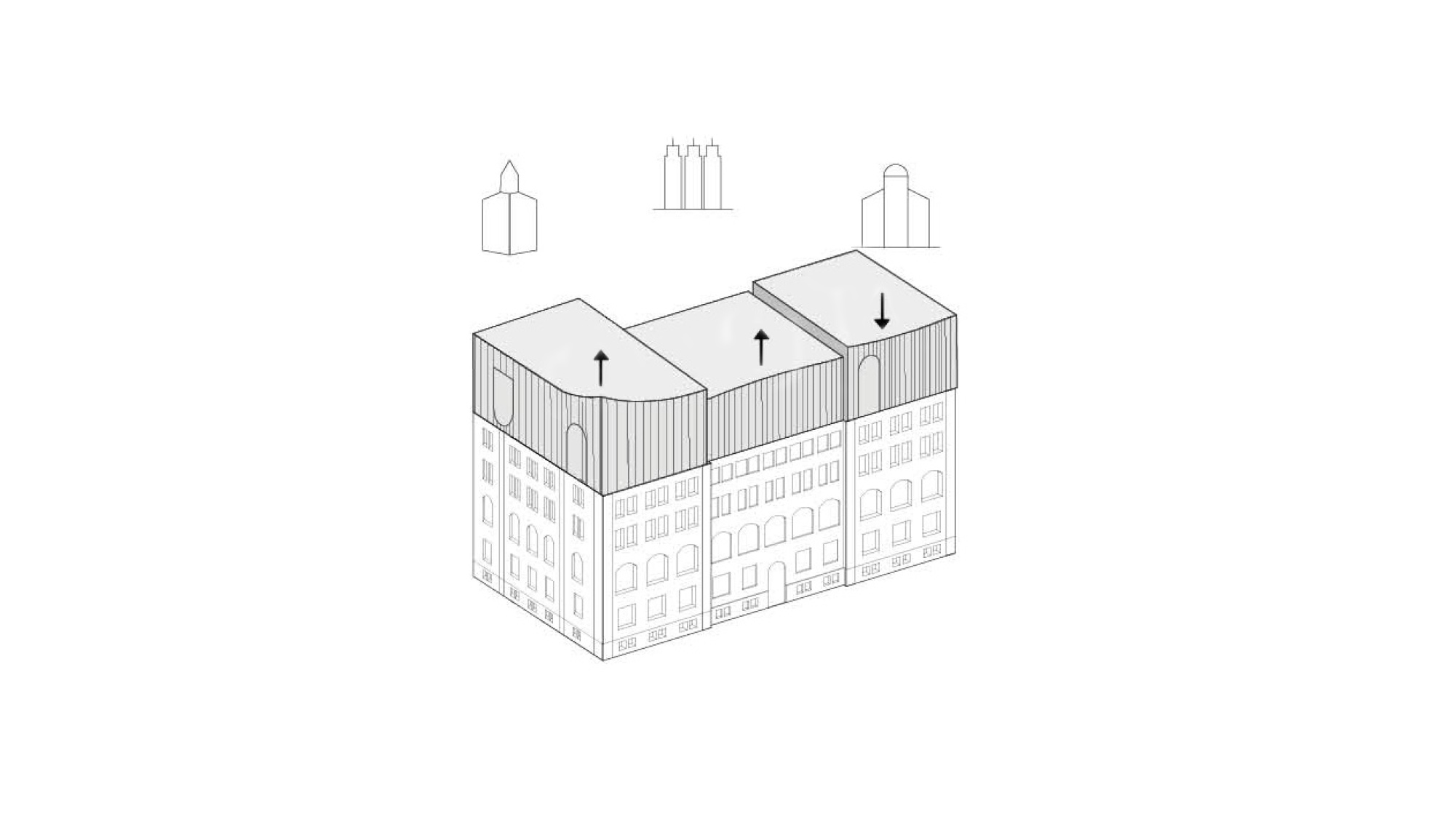TEXTILE MUSEUM
Standort: St. Gallen
Programm: Museum
Größe: 590 m2
Jahr: 2020-2021
Status: Konzept

"The Museum of Textiles: historic monument with cultural value"


-min.jpg)
Projektkonzept
Projektgeschichte
context
Die Grundlage für das Design des Textilmuseums bildet eine gründliche Analyse der Geschichte des Gebäudes, der lokalen Kultur und des Erbes. Das Museum befindet sich im „Palazzo Rosso“, einem alten Gebäude, das einst eine Spitzenfabrik im Herzen der Stadt St. Gallen war, und ist eng mit der Stadt und ihrer Geschichte verbunden. In der Umgebung gibt es bedeutende Gebäude, wie die Kirche St. Laurenzen oder das Rathaus, die typische Merkmale der Stadt sowie des Textilmuseums darstellen. Diese Gebäude in der Stadt haben eine direkte visuelle Beziehung zueinander. Die einzelnen Fenster wurden bewusst an diesen Punkten platziert, mit Blick auf die anderen städtischen Wahrzeichen.
CONCEPT
Die vertikale Erweiterung des Gebäudes besteht aus einem großen zusammenhängenden Showroom, der optisch in drei Volumen unterteilt ist – eine Fortsetzung der Gliederung des „Palazzo Rosso“ darunter. Die vorgeschlagene Fassade ist vom Modedesign inspiriert, insbesondere von der Ästhetik der filtrierten, schichtweisen Kollektionen von Elie Saab, bei denen Transparenz und opake Konzepte von zentraler Bedeutung sind. Sie ermöglicht mehr Kreativität, Flexibilität und Exzentrizität. Wie in der Mode oder Architektur kann durch die einfache Hinzufügung eines weiteren Elements ein völlig neues Outfit oder Fassadendesign geschaffen werden. Die alte und neue Struktur verkörpern die reiche architektonische und kulturelle Geschichte der Stadt und bieten Räume, um vielfältige Geschichten im Ausstellungsbereich des Textilmuseums zu teilen.
CONTENT
Die Ornamente des bestehenden Gebäudes wurden abstrahiert und in die Perforation der Fassadenpaneele integriert, wodurch eine gestalterische Referenz geschaffen wird. Dies ermöglicht es dem Gebäude, eine Rolle über seine Funktion hinaus zu übernehmen und auch als Eingang zu seinem Viertel interpretiert zu werden. Die Fenster können durch die äußere Schicht und den Innenvorhang, der aus recyceltem Polyester gefertigt ist, geschlossen werden. Die Priorität liegt auf dem Ausstellungsbereich, wo die leichte, hängende Rigging-Konstruktion für Beleuchtung, Audio- und Videotechnik maximale Flexibilität bei der Ausstellungsgestaltung ermöglicht.
DIAGRAMme
Zeichnungen
team
Projektleitung: Patrice Gruner
Architekten: Julian Leuenberger, Nicolas Hugentobler, Panagiotis Dimakidis
COPYRIGHT © GRUNER&FRIENDS International Ltd











